Captain Pearle William Mack, Jr.
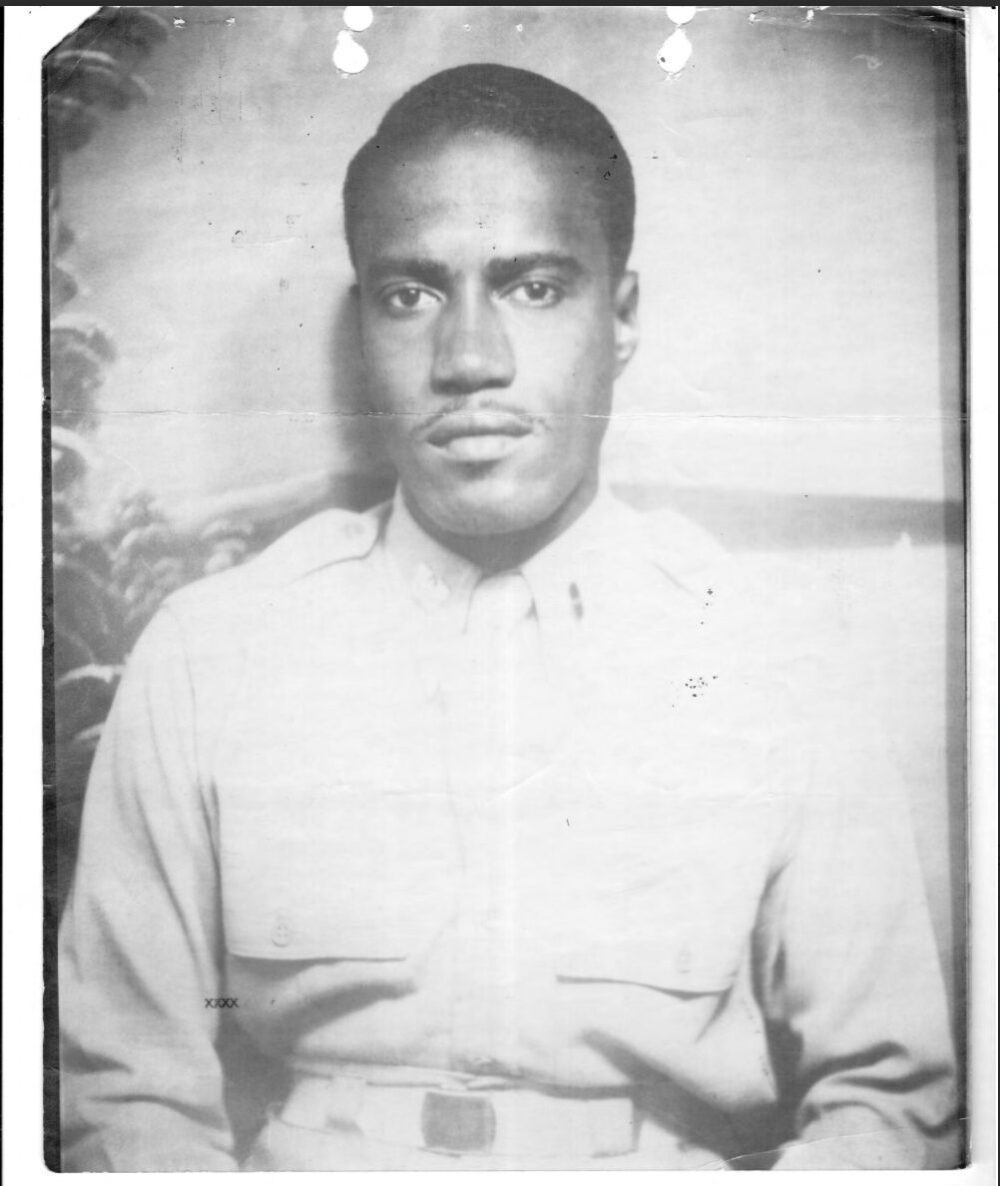
- Unit: 854th Transportation Company, 183rd Engineer Combat Battalion
- Date of Birth: November 22, 1918
- Date of Death: January 17, 2006
- Hometown: Topeka, Kansas
- Place of Death: Lakewood, Washington
- Award(s): Good Conduct Medal (5) Expert Badge with Pistol bar, Army Commendation Medal, National Defense Service Medal with 1 Bronze Service Star, Sharpshooter Badge with Pistol Bar, Marksman Badge with Carbine Bar, Bronze Star Medal, Armed Forces Expeditionary Medal (Vietnam), United Nations Service Medal, Korean Service Medal with 1 Bronze Service Star, European-African-Middle Eastern Campaign Medal with 3 Bronze Service Stars, World War II Victory Medal, World War II Honorable Service Lapel pin, Armed Forces Reserve Medal, Asiatic-Pacific Campaign Medal; American Campaign Medal, Army of Occupation Medal (Germany), Republic of Vietnam Campaign Medal with 1960 device
- Cemetery: Section 27, Row 0, Site 455. Tahoma National Cemetery, Kent, Washington
Mentored by Mrs. Nicole Maleki
Skyview Middle School
2024/2025
Early Life
Pearle William Mack, Jr. was born November 22, 1918 in Topeka, Kansas. His father, Pearl William Mack (1896–1952), served in World War I in France and worked as a hotel concierge and nightclub owner. His mother was Mayme Beulah Atchison Mack (1895–1988). He grew up with a sister, June.
Growing up in Kansas, Mack attended segregated schools. He enjoyed singing and performed with the “Colored Chorus” at Topeka High School.
He attended Washburn University and the University of Kansas with tuition help from his parents. He joined the Kappa Alpha Psi fraternity. He worked for an all-White sorority in exchange for room and board before being drafted into the United States Army after the attack on Pearl Harbor.

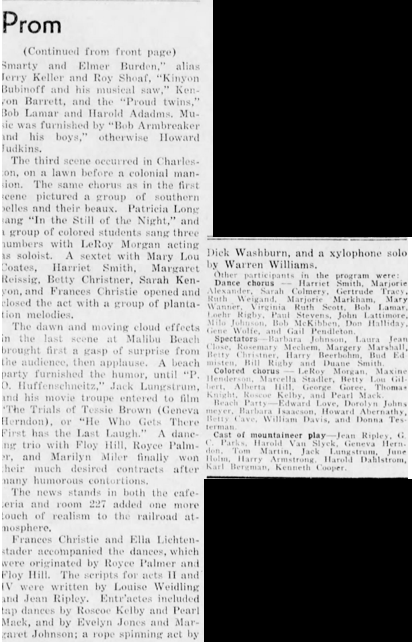

Homefront
In the 1950s, the capital of Kansas, Topeka, was surrounded by rural communities that focused on farming. Only 8% of the Topeka residents were Black, and Jim Crow segregation existed here.
Manufacturing and Farming
One important manufacturing plant, Goodyear Tire & Rubber Company, operated in Topeka. Started in 1944, the company chose Topeka for its strategic proximity to military areas. Its rural location was seen as a way to protect the plant from possible attack.
Topeka was home to railroad car manufacturing. The Santa Fe Railway Company had their shop in Topeka.
Nearby farming communities produced wheat, corn, barley sorghum, hay, and soybeans. Farmers relied on the railroad to export their goods including cattle.
The Fight for Equality
The push for racial integration, including in public schools, produced the biggest change from the 1940s through the 1950s.
In 1950, the NAACP in Topeka organized a challenge to a Kansas law from 1879 that allowed elementary schools to racially segregate students. In Topeka, 18 elementary schools were designated as “White” schools, and four were designated as “Black.” In 1951, a group of parents tried to enroll their Black children in the “White” schools, challenging this law. The case, Brown v. Board of Education of Topeka, went all the way to the Supreme Court. Ultimately, the Supreme Court ruled that racial segregation in schools was unconstitutional, and schools had to integrate.
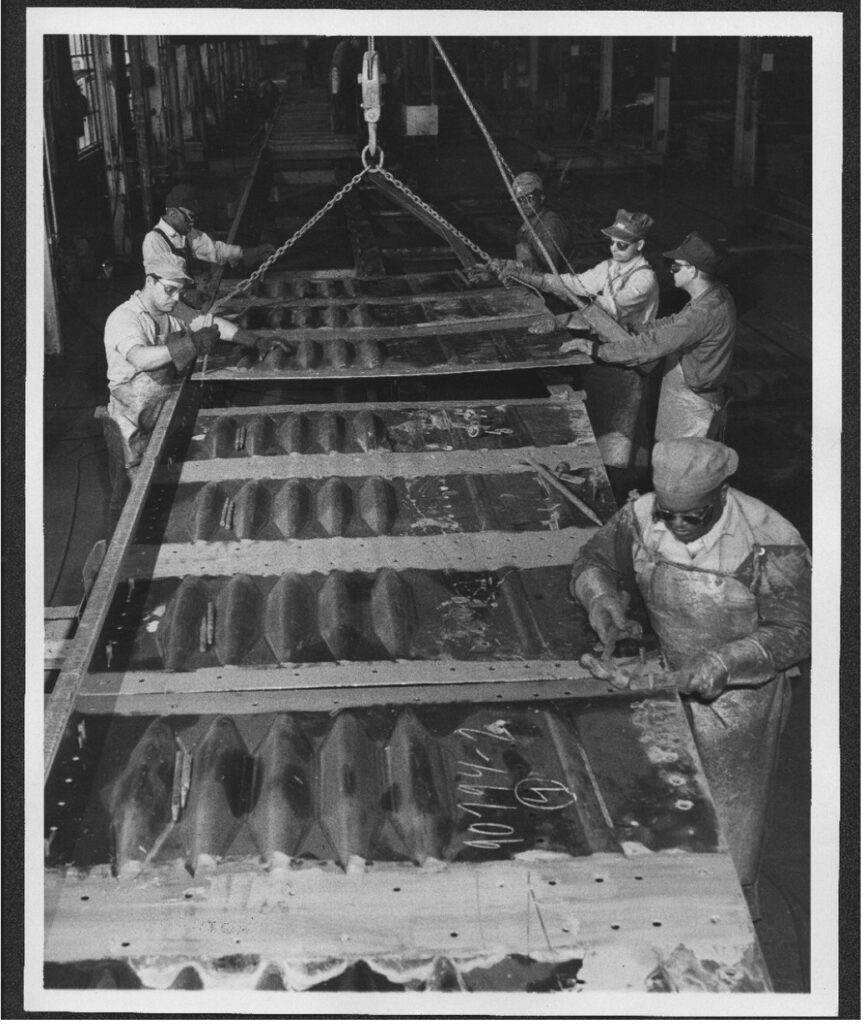
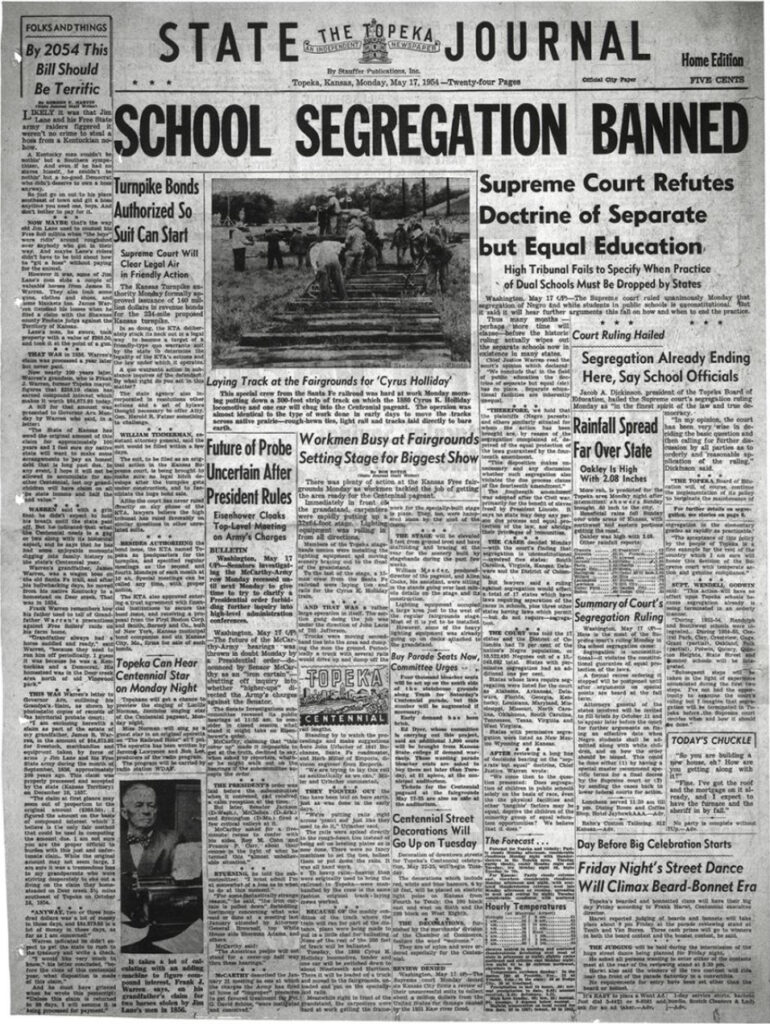
Military Experience
World War II
Called to action by the Japanese attack on Pearl Harbor, Mack attempted to enlist in the military on December 8, 1941, in Topeka, Kansas. In an oral history, he recounted that a racist recruiter denied his request. He kept trying, and he eventually joined the military in 1942.
He completed his basic training in Fort Leonard Wood, Missouri, and served there from March 1942 to September 1944. When Brigadier General Benjamin O. Davis, Sr., the first Black soldier to reach the rank of general, came to inspect Fort Leonard Wood, Mack was assigned to serve as his orderly.
Then Mack attended infantry school in Fort Benning, Georgia, his first experience in the deep South. There he encountered profound racism, which culminated in an incident when a racial slur was repeatedly shouted at him as an order. He stood his ground and asked the captain to address him properly (as “candidate,” rather than a slur). As a result, the officer beat him and he was dismissed from the infantry school (without prejudice). He was then transferred to Camp Carson, Colorado. Mack completed officer school in Colorado and became the first Black commissioned Army officer from the state of Colorado.
He served overseas tours in the European Theater of Operations from September 28, 1944 to July 1, 1945, at which time he transferred to the Pacific Theater. After the war ended in the Pacific, he returned to serve in post-war Europe from January 26, 1946 through June 19, 1947.
Korean War
Once the Korean War began, Pearle Mack’s first commissioned officer assignment was at Camp Stoneman, California, with the 854th Transportation Company, 183rd Engineer Combat Battalion. Camp Stoneman, an important staging area for troops headed to Korea, was a last stop before deployment. Mack reported that they built Bailey bridges and worked on cargo ships readying them for deployment to the Korean Conflict.
During his time serving at Camp Stoneman, he joined a singing group of five men. They called themselves the “Spiritual Transporteers.” The group performed around the Bay Area and appeared on the Horace Heidt show. This a cappella group helped entertain troops coming and going from the Pacific.
Like many of the Camp Stoneman troops, Mack participated in the atomic testing at Yucca Flats, Nevada. Mack was exposed to the radiation as he as her sat in a seven foot foxhole next to a member of Congress.
Deployed to Korea in 1953, Mack became the commanding officer of the 513th Transportation Company. His company came under the command of Brigadier General General Richard S. Whitcomb, the commander of the 2nd Logistics Command. Mack first met Whitcomb in Greenland. The unit deployed to Busan, Korea, and later moved to Seun, Korea, from April 1953 to March 1954. There, his unit helped lead Operation Big Switch and Operation Little Switch. Their job was to transport the Chinese and Korean prisoners for exchange. He described the camp in Seun as built on “stilts” on rugged terrain.
His unit received a citation for the work they did in Korea.
Service Beyond the Korean War
After the Korean War, Mack was sent to Okinawa, Japan. He served as the chief psychiatric social worker at Mercy Hospital from March 1945 to September 1956, working in the anti-alcohol abuse program. His family joined him in Okinawa. Later, he worked at Walter Reed Hospital Army Institute of Research in Washington, D.C. He focused his studies on sleep deprivation. At some point, Mack, who had served as a commissioned officer during the Korean War, took a demotion to non-commissioned officer ranks, likely to continue his military service until he could retire.
Later in his career, he studied Vietnamese and worked in operations and intelligence. He deployed to Vietnam from March 8, 1964 to March 3, 1965. He was awarded a Bronze Star for his work in Vietnam.
He retired in 1972 as a master sergeant, following a 30-year career in the United States Army.
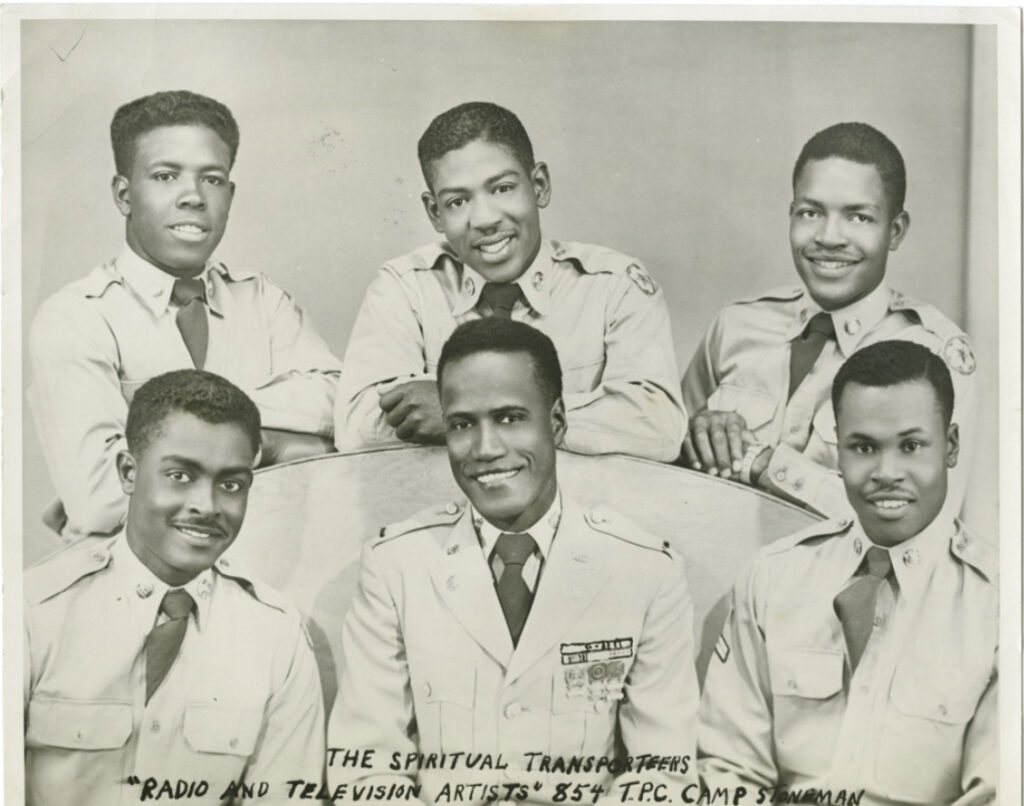
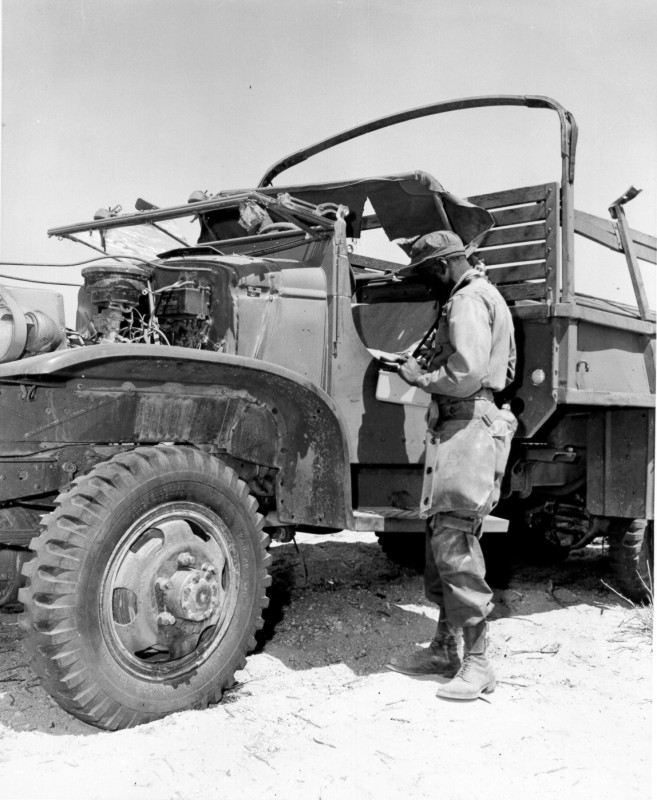
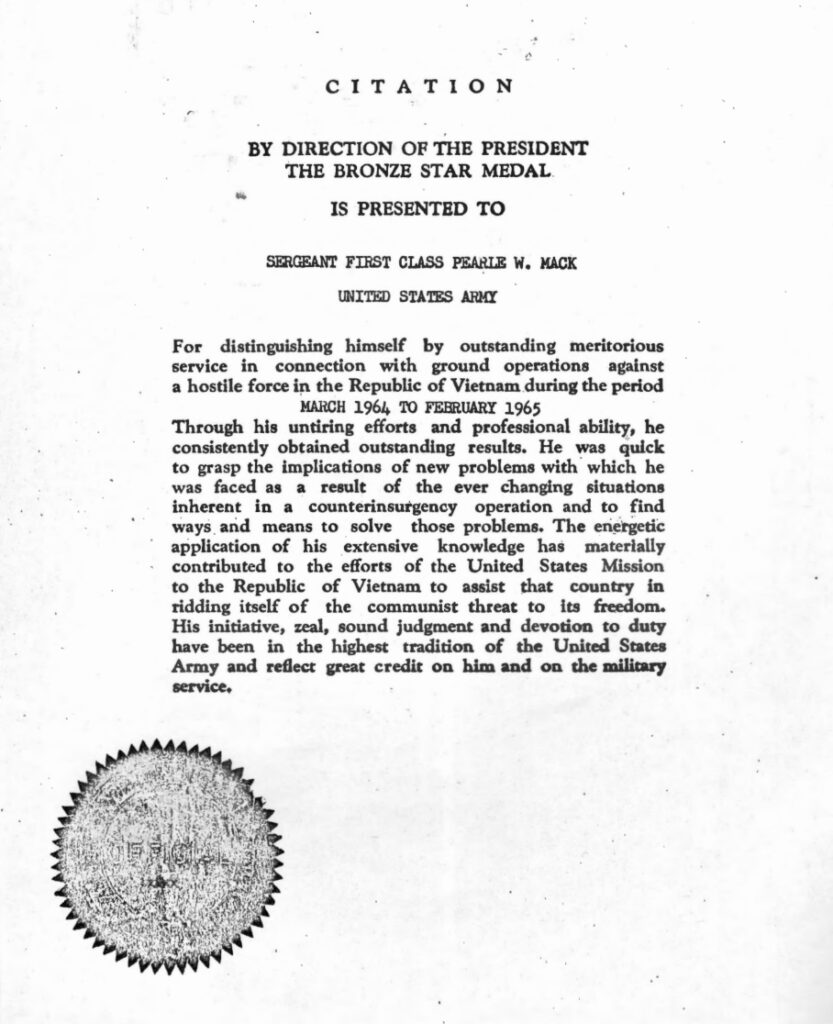
Veteran Experience
During World War II, Mack married Callie Trellis Cole on August 20, 1943, in Texas. That marriage appeared to be short-lived. By 1950, Mack was married to Mary Ann Henrie Mack, and lived Denver, Colorado, with their daughter, Renee. Mack and Mary Ann had four children (Gary, Michelle, Renee, and William) and three grandchildren. Gary and William have continued their father’s legacy by serving as firefighters in their community.
In 1975, Mack moved to Vashon Island, Washington, after retiring from the military in Alaska and became involved in the local government. There, he served as chair of the transportation and public safety committee from 1988 to 1998, and was a champion for public safety and transportation on Vashon Island.
After serving several years as the Island’s Community Council Precinct Representative, Mack was awarded a Community Council plaque for his service. In 1994, he was selected Grand Marshall of the Strawberry Festival Parade on Vashon Island. In 1999, the Washington State Grange named him their Citizen of the Year.
In November 1999, Mack ran for public office in the position of Fire District Commissioner of King County. He received over 40% of the votes but ultimately lost the election.
Commemoration
“Civicticion”
While retired from the military and living on Vashon Island, Mack was also involved in the Jehovah Witnesses religious community. Throughout his life, Mack remained humble and committed to his faith, his family, and his country.
Mack passed away on January 17, 2006, leaving behind four children, three grandchildren, and a legacy of service. His wife, Mary Ann, died in 2012. They are buried together in Tahoma National Cemetery in Kent, Washington.
As Mack would say, we should all strive to be “civictitions,” leaving our communities better than we found them.
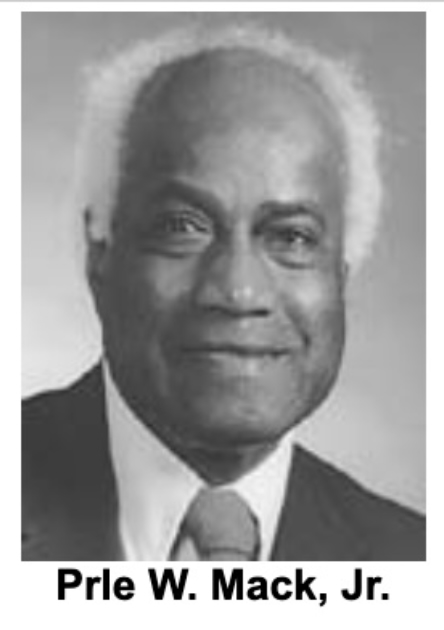
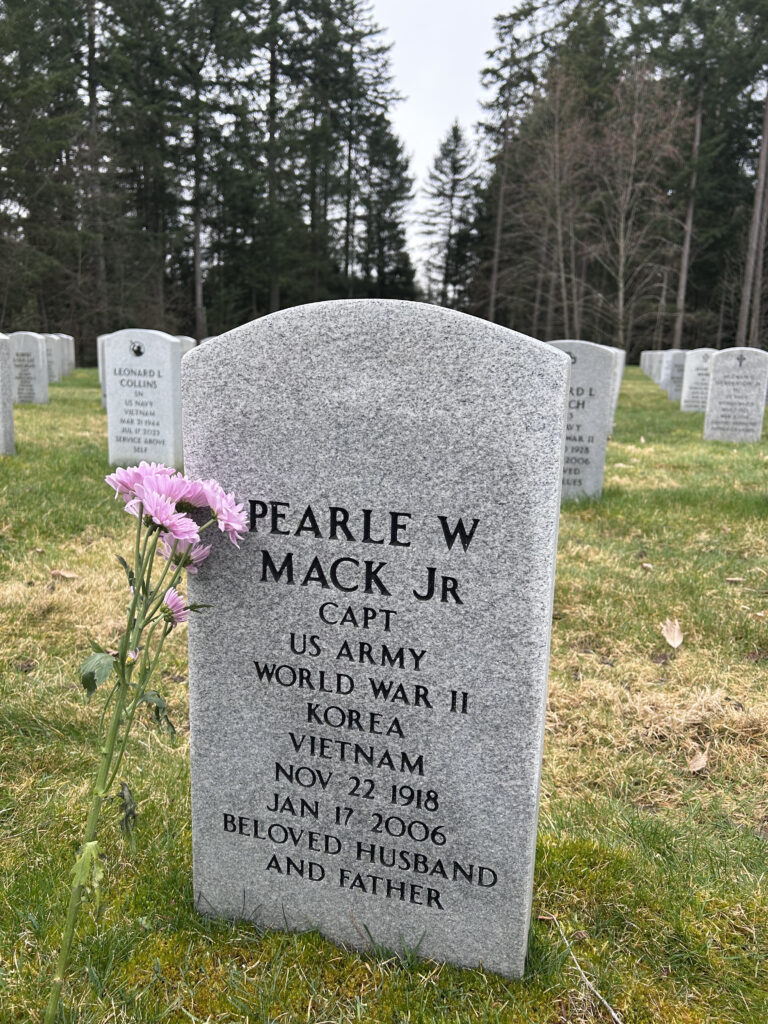
Bibliography
Primary Sources
“The 1938 Junior . . .” The High School World [Topeka, KS], April 1, 1938. Newspapers.com (1036982568).
Atchison, Topeka and Santa Fe Railway Company Car Shop, Topeka, Kansas. Photograph. 1955. Kansas Historical Society (51750). https://www.kansasmemory.org/item/51750.
“Frances Cave.” The Journal News, February 5, 2014. https://www.legacy.com/us/obituaries/lohud/name/frances-cave-obituary?id=23583668.
Hodgson, Jennie. “Flattered by Coverage.” The Vashon-Maury Island Beachcomber [Vashon, WA], July 21, 2009. https://www.vashonbeachcomber.com/letters/letter-to-the-editor-july-22/.
“James Anthony Motin.” The Seattle Times [Seattle, WA], June 28, 2020. https://www.legacy.com/us/obituaries/seattletimes/name/james-motin-obituary?id=13196771.
Kansas. Shawnee County. 1920 U.S. Census. Digital images. http://ancestrylibrary.com.
“King County Local Voters Pamphlet.” King County. Updated November 2, 1999. Accessed December 11, 2024. https://your.kingcounty.gov/elections/99nov/pamphlet/f131.htm.
“Korea: Big Switch.” TIME, August 7, 1953. https://time.com/archive/6795615/korea-big-switch/.
Lt. Pearle W. Mack Jr., radiation officer, inspects a 2 ½ ton truck at 1709 yards from ground zero. Atomic Test, NV Proving Ground, April 23, 1952. Photograph. April 23, 1952. National Nuclear Security Administration (TS-52-34). https://commons.wikimedia.org/w/index.php?title=File:NNSA-NSO-902.jpg&oldid=956382265.
“Mack, Prlé.” Vashon-Maury Island Beachcomber [Vaschon, WA], January 17, 2006. NewsBank. https://infoweb-newsbank-com.
“Michelle Mack.” The Seattle Times [Seattle, WA], September 26, 2017. https://www.legacy.com/us/obituaries/seattletimes/name/michelle-mack-obituary?id=37501034.
Opinion, Brown v. Board of Education. Court Decision. May 17, 1954. National Archives and Records Administration (NAID: 1656510). https://catalog.archives.gov/id/1656510.
Pearl E. Mack, Official Military Personnel File (partial), Department of the Army, National Archives and Records Administration – St. Louis.
Pearl W. Mack, Jr. Texas, U.S., Select County Marriage Records, 1837-1965. Digital images. https://ancestry.com.
Pearle W. Mack, Jr. Collection. Oral History. Veterans History Project, Library of Congress AFC/2001/001/5764). https://www.loc.gov/item/afc2001001.05764/.
“Segregation in Schools is Outlawed.” The Russell Daily News [Russell, KS], May 17, 1954. Library of Congress. https://www.loc.gov/exhibits/brown/images/br0084.jpg.
The Spiritual Transporteers. Photograph. c.1952. Jack Lary Photograph Collection, Missouri Historical Society (P0902-00071). https://mohistory.org/collections/item/P0902-00071.
Statistics for the State, Kansas. United States Department of Agriculture. 1954. https://agcensus.library.cornell.edu/wp-content/uploads/1954-Kansas-CHAPTER_A_-_STATISTICS_FOR_THE_STATE-979-Table-16.pdf.
“Steno Classes Visit Goodyear.” The High School World [Topeka, KS], April 14, 1950. Newspapers.com. (1036949615).
“VRFA Battalion Chief Mack Accepts Position at East Pierce.” Valley Regional Fire Authority, July 2, 2021. Accessed December 11, 2024. https://www.vrfa.org/2021/07/vrfa-battalion-chief-mack-accepts-position-at-east-pierce/.
Williams, Hanson A., Jr., Troops assembling at Camp Stoneman for shipping out to Korea. Photograph. January 1952. Pepperdine University Libraries. https://jstor.org/stable/community.31608696.
Secondary Sources
Duignan, Brian. “Brown v. Board of Education.” Encyclopedia Britannica, Accessed October 28, 2024. https://www.britannica.com/event/Brown-v-Board-of-Education-of-Topeka.
Fletcher, M. America’s First Black General: Benjamin O. Davis, Sr., 1880-1970. University Press of Kansas. 1989.
“Gary K. Mack.” Legacy Alaska. Accessed on October 15, 2024. https://www.legacyalaska.com/obituaries/Gary-K-Mack?obId=32484223.
Hurt, Douglas. “The Great Plains During WWII.” University of Nebraska-Lincoln. Updated 2008. Accessed November 6, 2024. http://plainshumanities.unl.edu/homefront/intro.html?section=intro.
“June Mack Motin.” The Co-Op Funeral Home of People’s Memorial. Accessed October 16, 2024. https://www.funerals.coop/obituaries/june-mack-motin.
Mapp, Anjelica. Celebrating a Legacy: Late US Army General Whitcomb, Acclaimed Father of Korean War Orphans. US Army. Accessed Janiuary 18, 2025. https://www.army.mil/article/271601/celebrating_a_legacy_late_us_army_general_whitcomb_acclaimed_father_of_korean_war_orphans.
Mitchell, Mike. “Field Update: AAM Visits the Goodyear Plant in Kansas.” Alliance for American Manufacturing. Updated November 11, 2014. Accessed November 6, 2024. https://www.americanmanufacturing.org/blog/field-update-aam-visits-the-goodyear-plant-in-kansas/.
“Pearl William Mack, Jr.” Find a Grave. Updated October 10, 2009. Accessed October 10, 2024. https://www.findagrave.com/memorial/42916083/pearle_william-mack.
“Pearl William Mack, Jr.” Veterans Legacy Memorial, U.S. Department of Veterans Affairs. Accessed March 13, 2025. https://www.vlm.cem.va.gov/PEARLEWILLIAMMACKJR/152F5C2.
Sanders, G. V. “Push Over Bridge Built Like Magic from Interlocking Parts.” Popular Science, October 1944. https://books.google.com/books?id=PyEDAAAAMBAJ&pg=PA94#v=onepage&q=bailey&f=false.
“Timeline: Modern Vashon 200-2009.” Vashon History. Updated 2013. Accessed December 11, 2024. https://www.vashonhistory.com/Vashon%20History/Timeline/modern_2000.htm.
“Topeka, Kansas.” Brown v. Board of Education National Historic Park, National Park Service. Updated April 11, 2024. Accessed November 6, 2024. https://www.nps.gov/brvb/learn/historyculture/topeka.htm.
“Topeka, Kansas: Segregation in the Heartland.” Separate Is Not Equal: Brown v. Board of Education, Smithsonian’s National Museum of American History. Accessed November 12, 2024. https://americanhistory.si.edu/brown/history/4-five/topeka-kansas-1.html.
Van De Linder, Jean. “Brown v. Board of Education of Topeka: A Landmark Case Unresolved Fifty Years Later.” Prologue Magazine 36 (no. 1), 2004. https://www.archives.gov/publications/prologue/2004/spring/brown-v-board-1.html.
This profile was funded by a grant from the United States Department of Veterans Affairs. The opinions, findings, and conclusions stated herein are those of the author and do not necessarily reflect those of the United States Department of Veterans Affairs.

